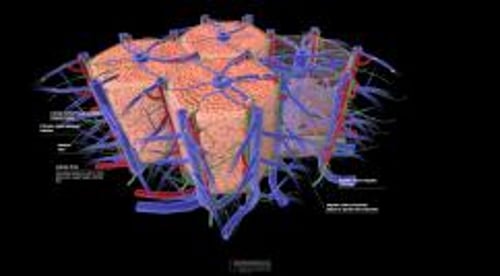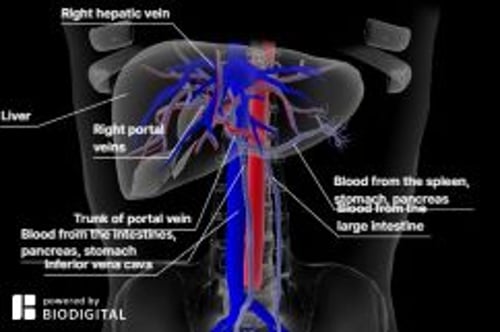The wedge-shaped liver is the largest—and, in some ways, the most complex—internal organ in the body. It serves as the body's chemical factory, performing many vital functions, from regulating the levels of chemicals in the body to producing substances that make blood clot (clotting factors) during bleeding. (See also Overview of the Liver and Gallbladder.)
Functions of the Liver
The liver manufactures about half of the body's cholesterol. The rest comes from food. Most of the cholesterol made by the liver is used to make bile, a greenish yellow, thick, sticky fluid that aids in digestion. Cholesterol is also needed to make certain hormones, including estrogen, testosterone, and the adrenal hormones, and is a vital component of every cell membrane.
The liver manufactures other substances, including proteins needed by the body for its functions. For example, clotting factors are proteins needed to stop bleeding. Albumin is a protein needed to maintain fluid pressure in the bloodstream.The liver manufactures other substances, including proteins needed by the body for its functions. For example, clotting factors are proteins needed to stop bleeding. Albumin is a protein needed to maintain fluid pressure in the bloodstream.
Sugars are stored in the liver as glycogen and then broken down and released into the bloodstream as glucose when needed—for example, during sleep when a person spends many hours without eating and sugar levels in the blood become too low.
The liver also breaks down harmful or toxic substances (toxins) absorbed from the intestine or manufactured elsewhere in the body and then excretes them as harmless by-products into the bile or blood. By-products excreted into bile enter the intestine, then leave the body in stool. By-products excreted into blood are filtered out by the kidneys, then leave the body in urine. The liver also chemically alters (metabolizes) drugs (see Drug Metabolism), often making them inactive or easier to excrete from the body.
Blood Supply of the Liver
The liver receives blood directly from the intestines, as well as from the heart, as do all other organs. Blood from the intestines contains nearly everything absorbed by the intestines, including nutrients, drugs, and sometimes toxins. This blood flows through tiny capillaries in the intestinal wall into the portal vein, which enters the liver. The blood then flows through a latticework of tiny channels inside the liver, where digested nutrients and toxins are processed.
The hepatic artery brings blood to the liver from the heart. This blood carries oxygen to the liver tissues as well as cholesterol and other substances for processing. Blood from the intestines and heart then mix together in the liver tissues and flow back to the heart through the hepatic vein. The liver receives blood and nutrients primarily from the portal vein but some blood comes from the hepatic artery. The hepatic artery is the dominant system providing blood and oxygen to the bile ducts in the liver.
Drugs Mentioned In This Article







